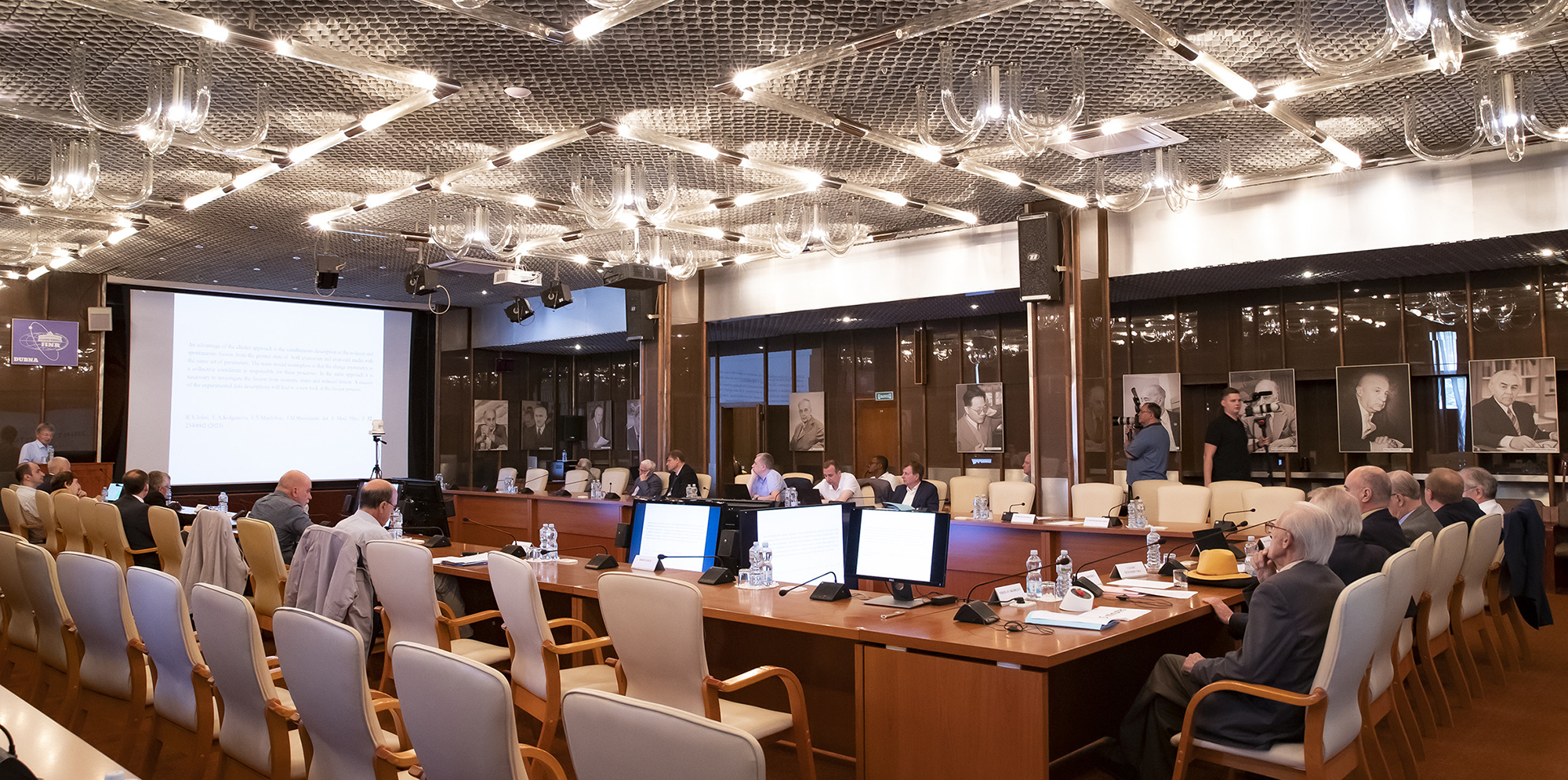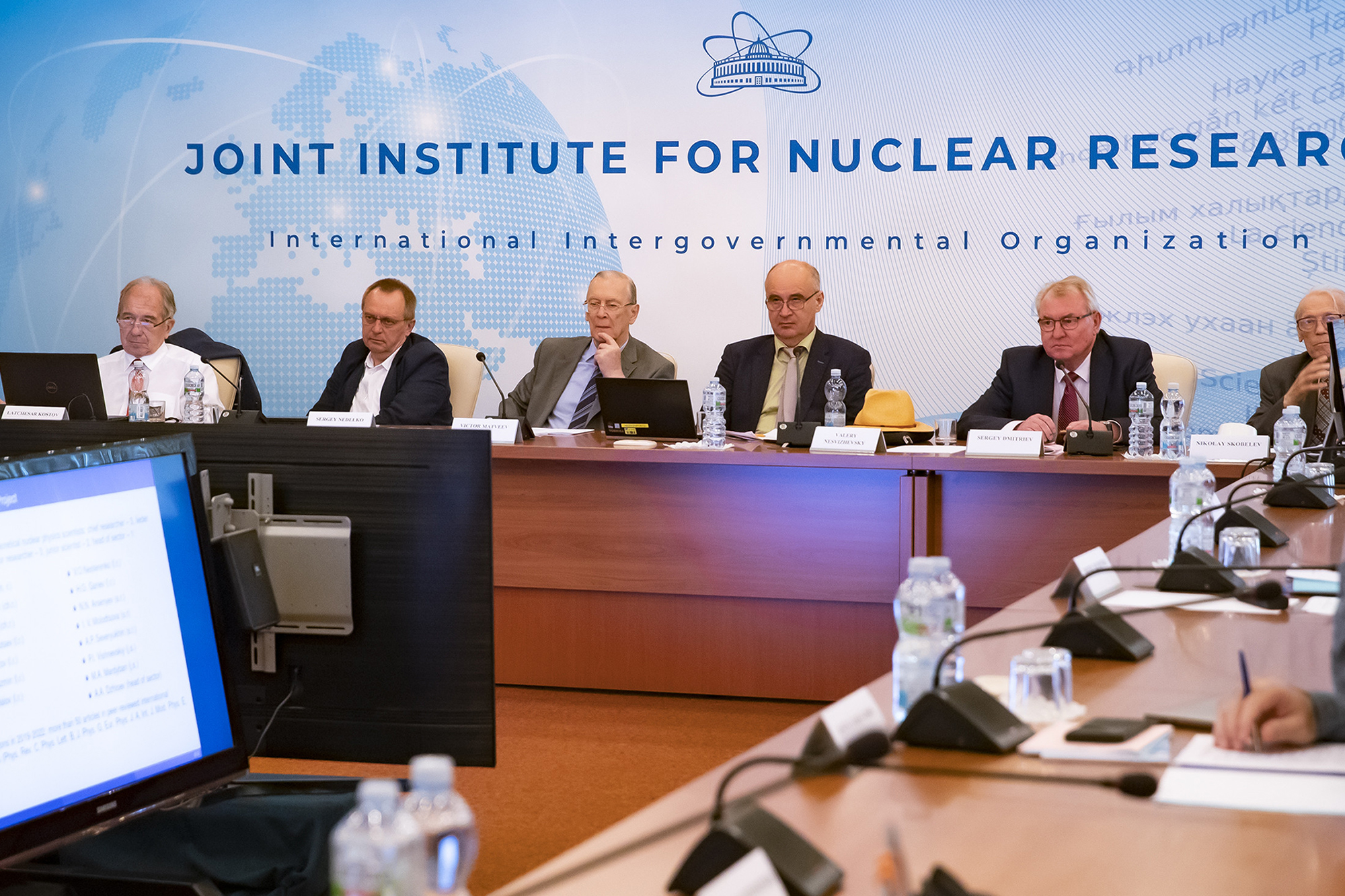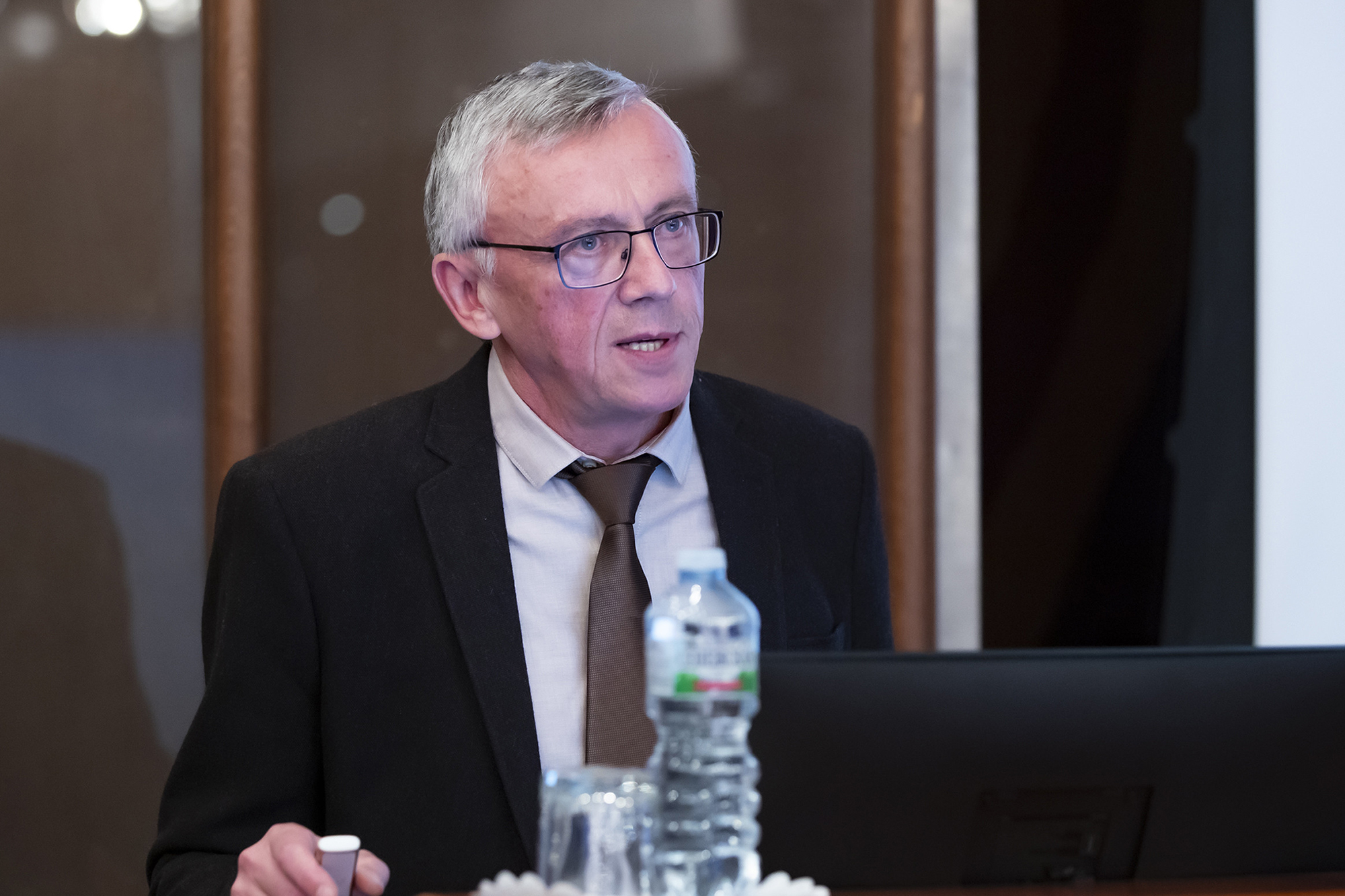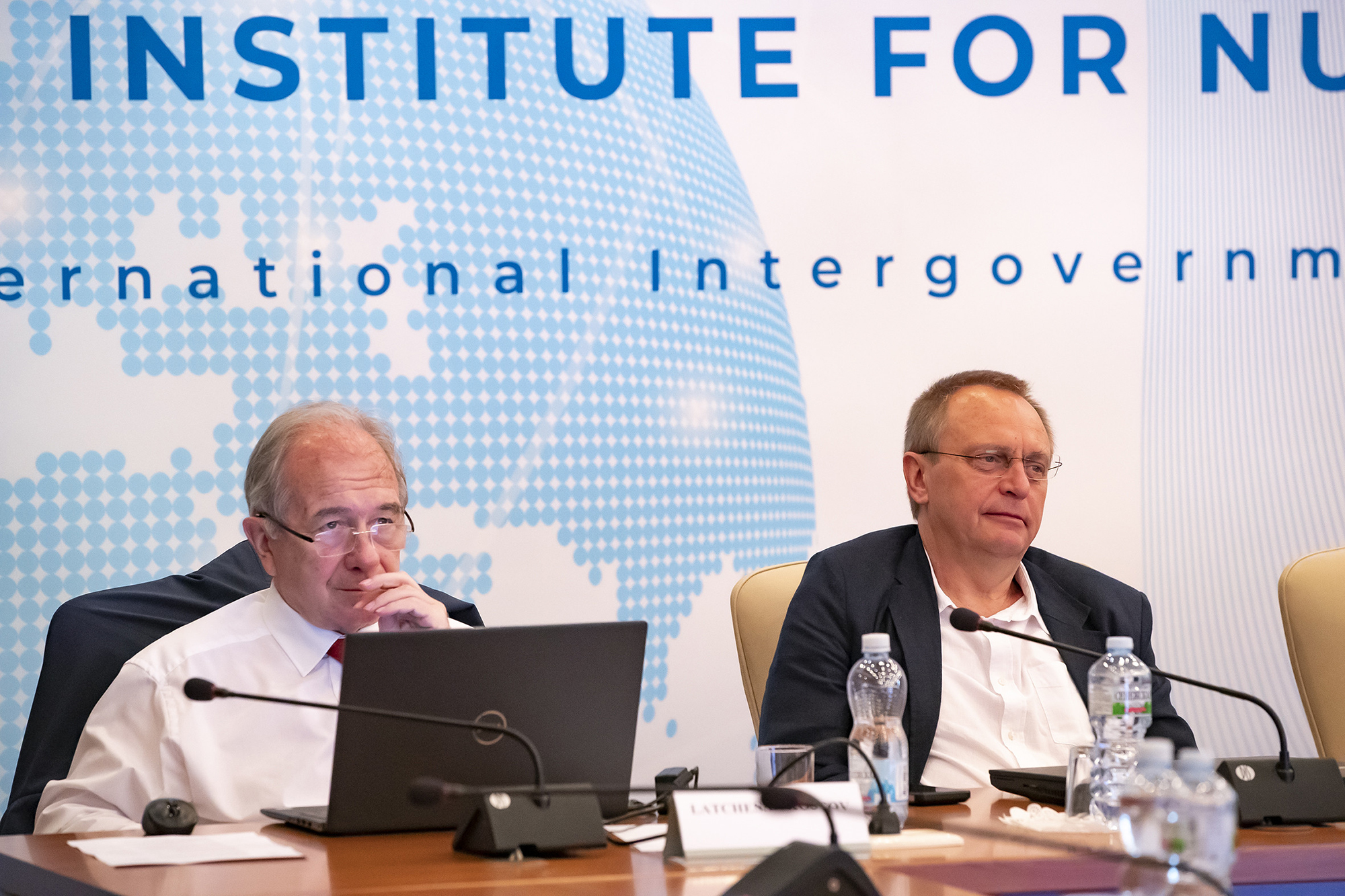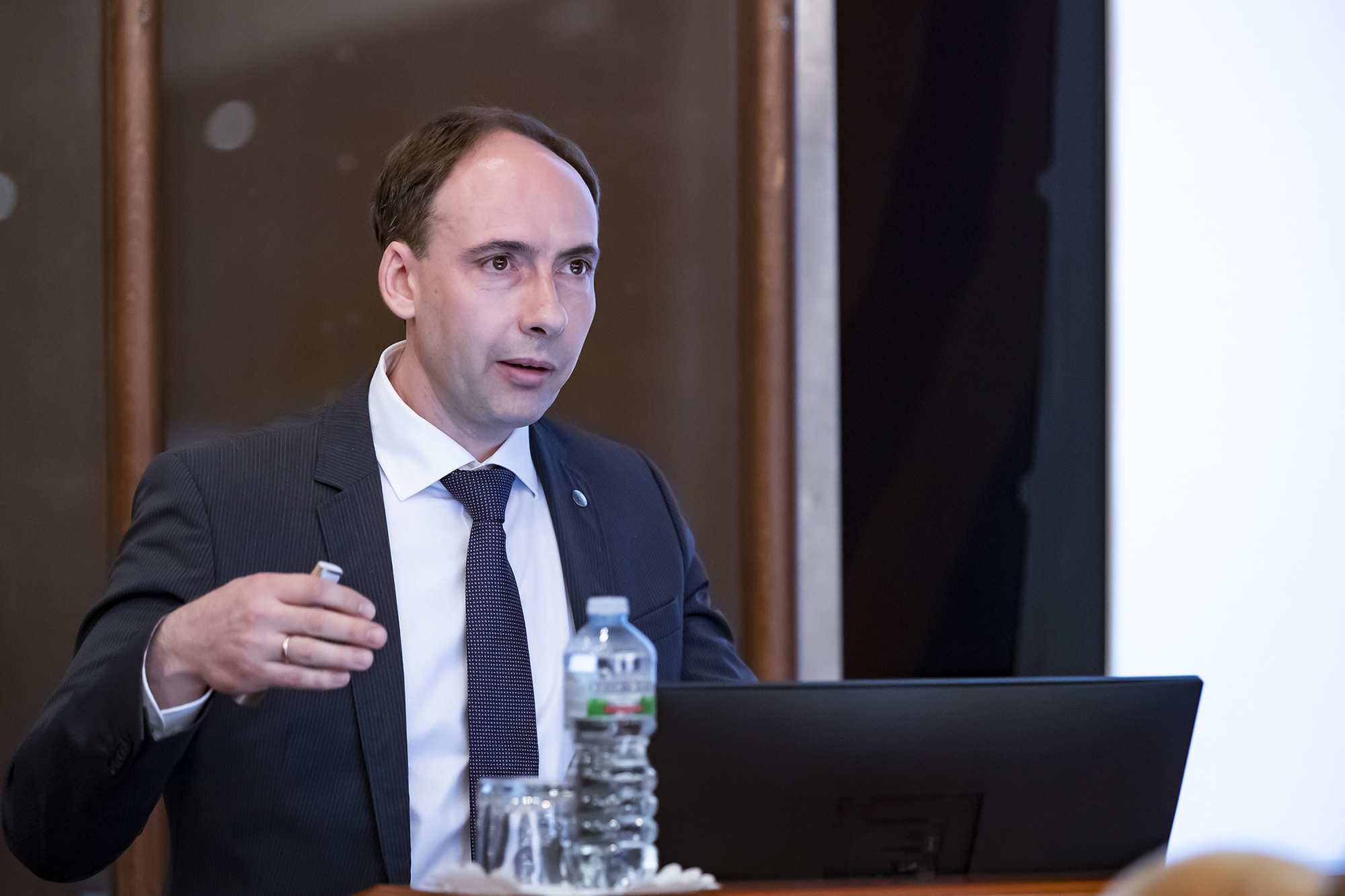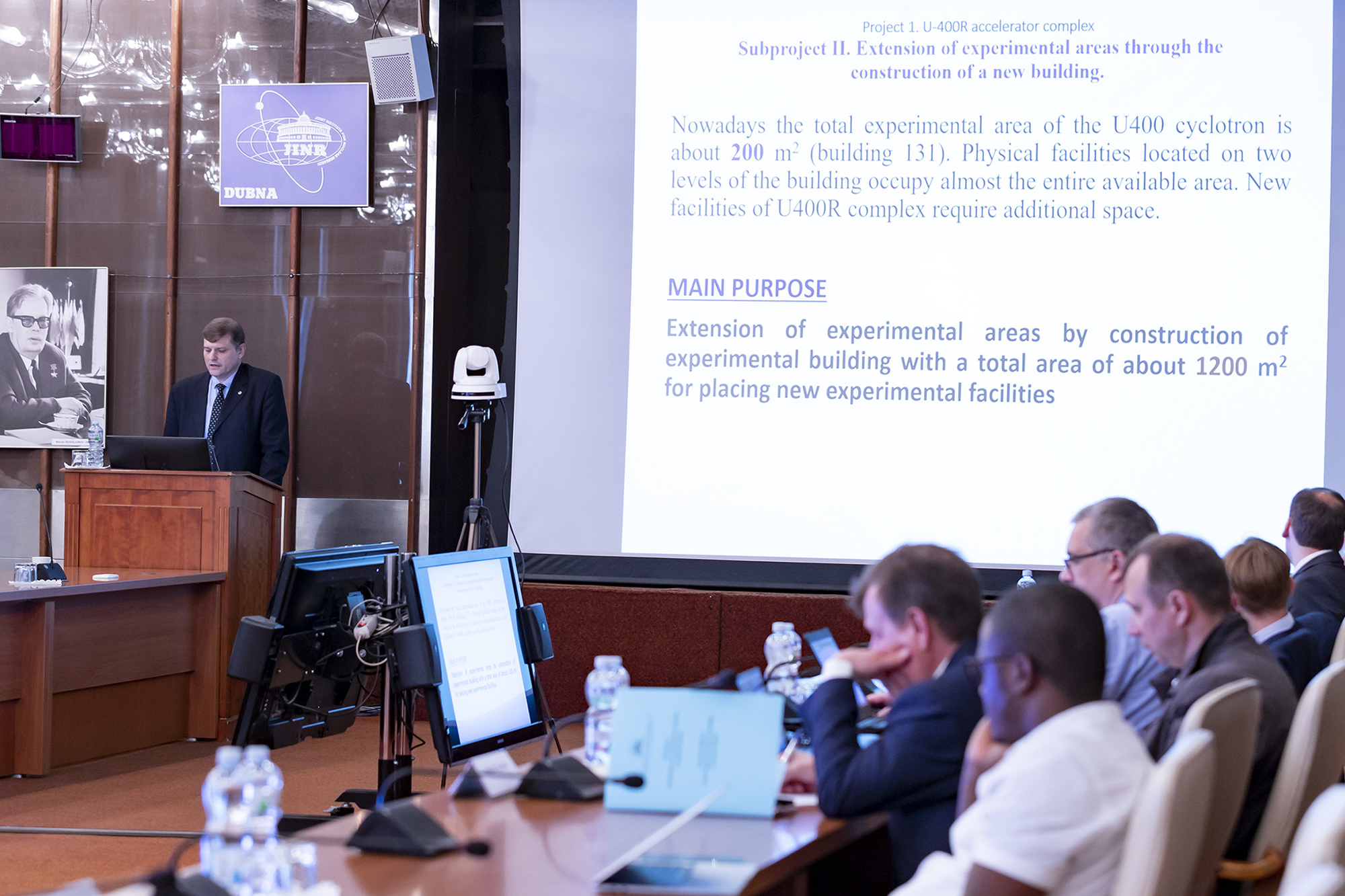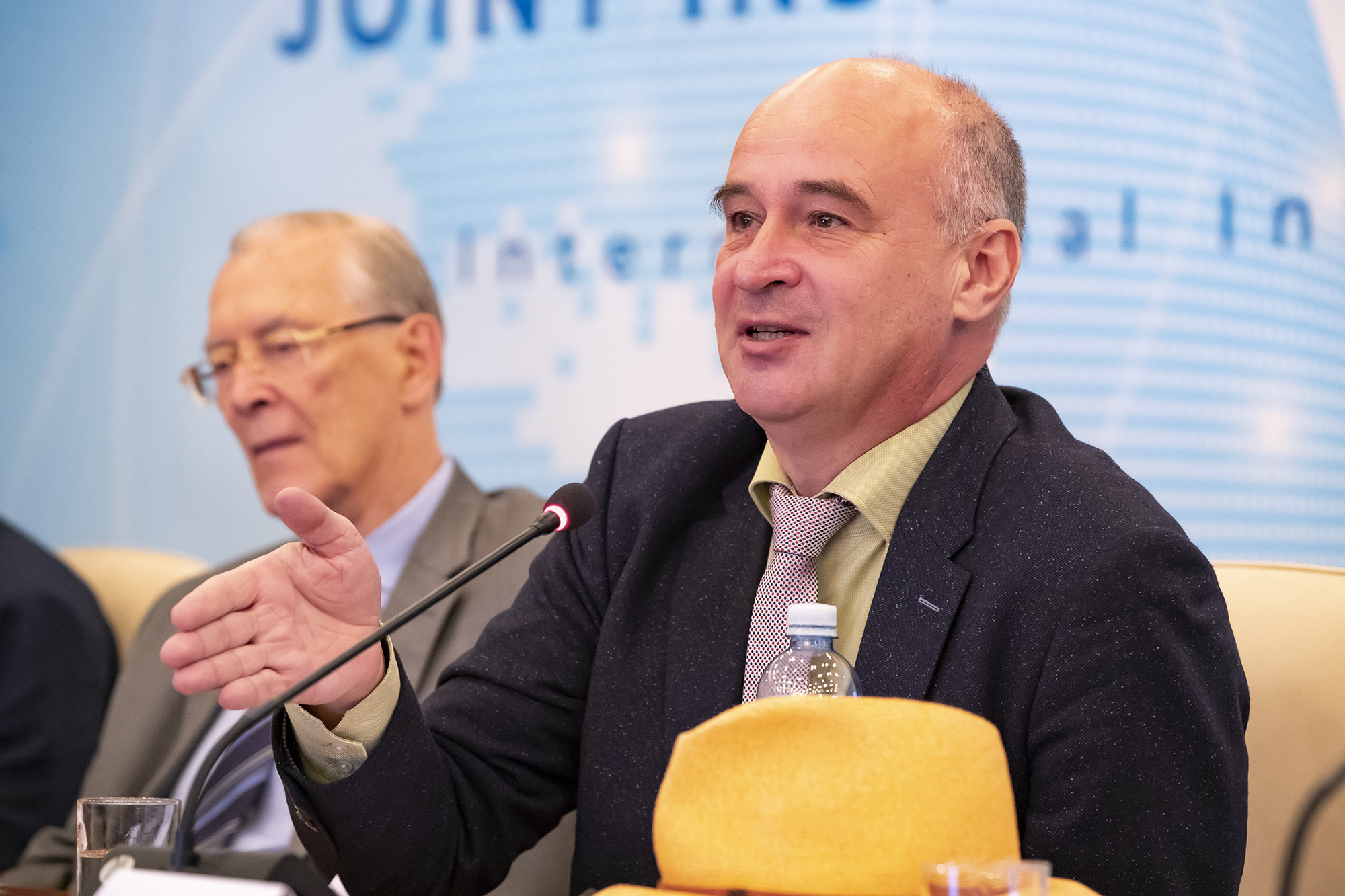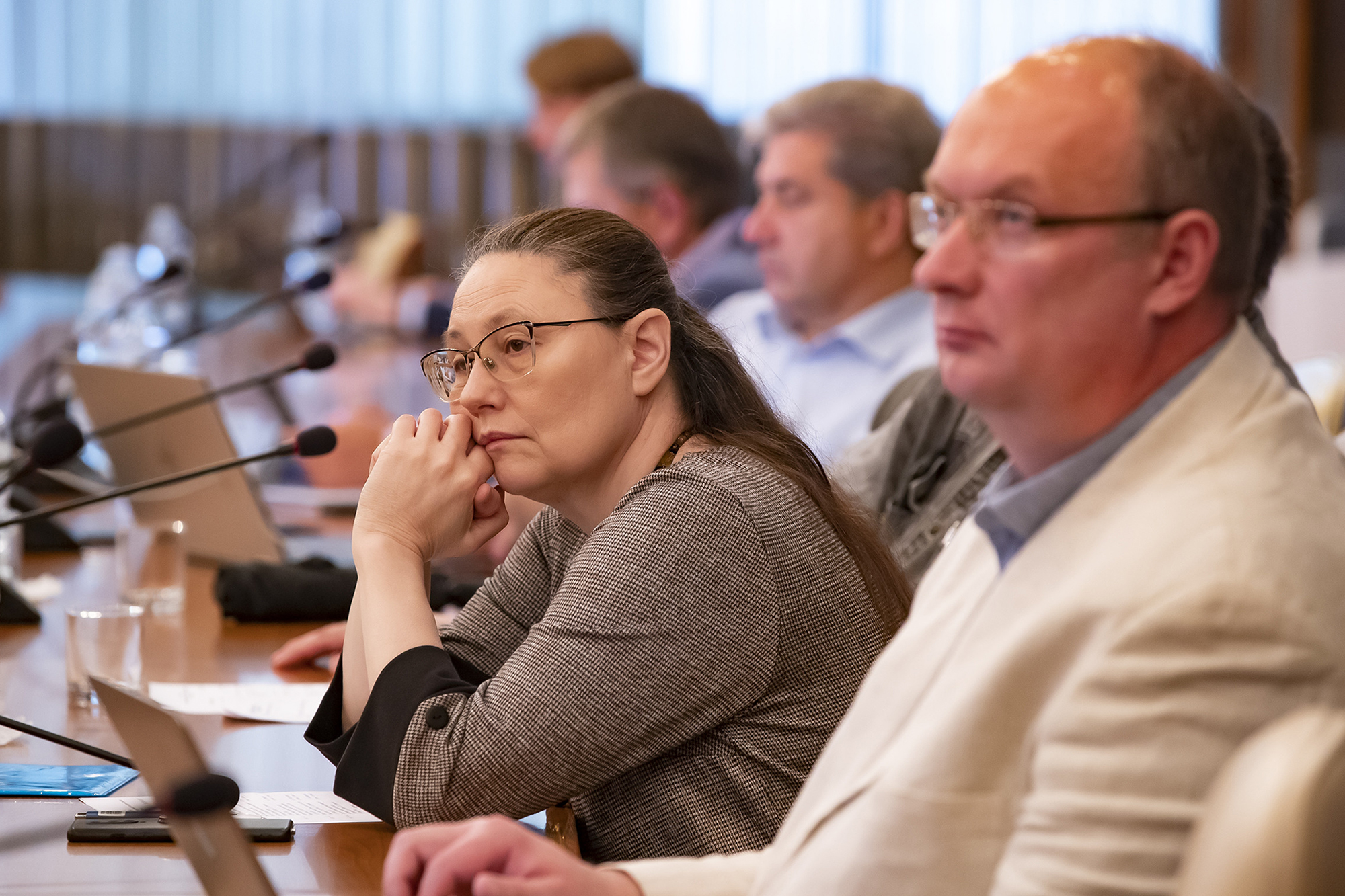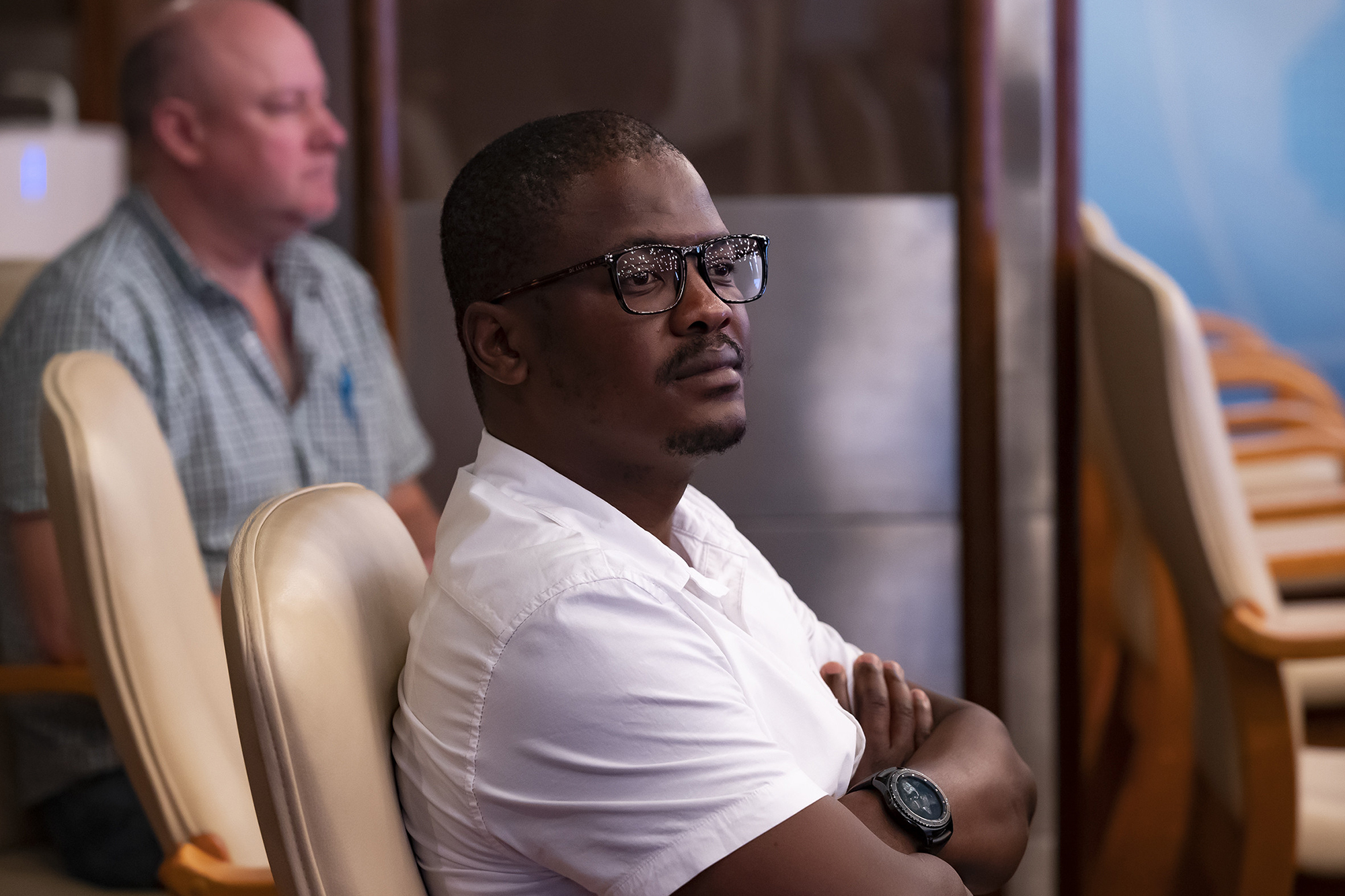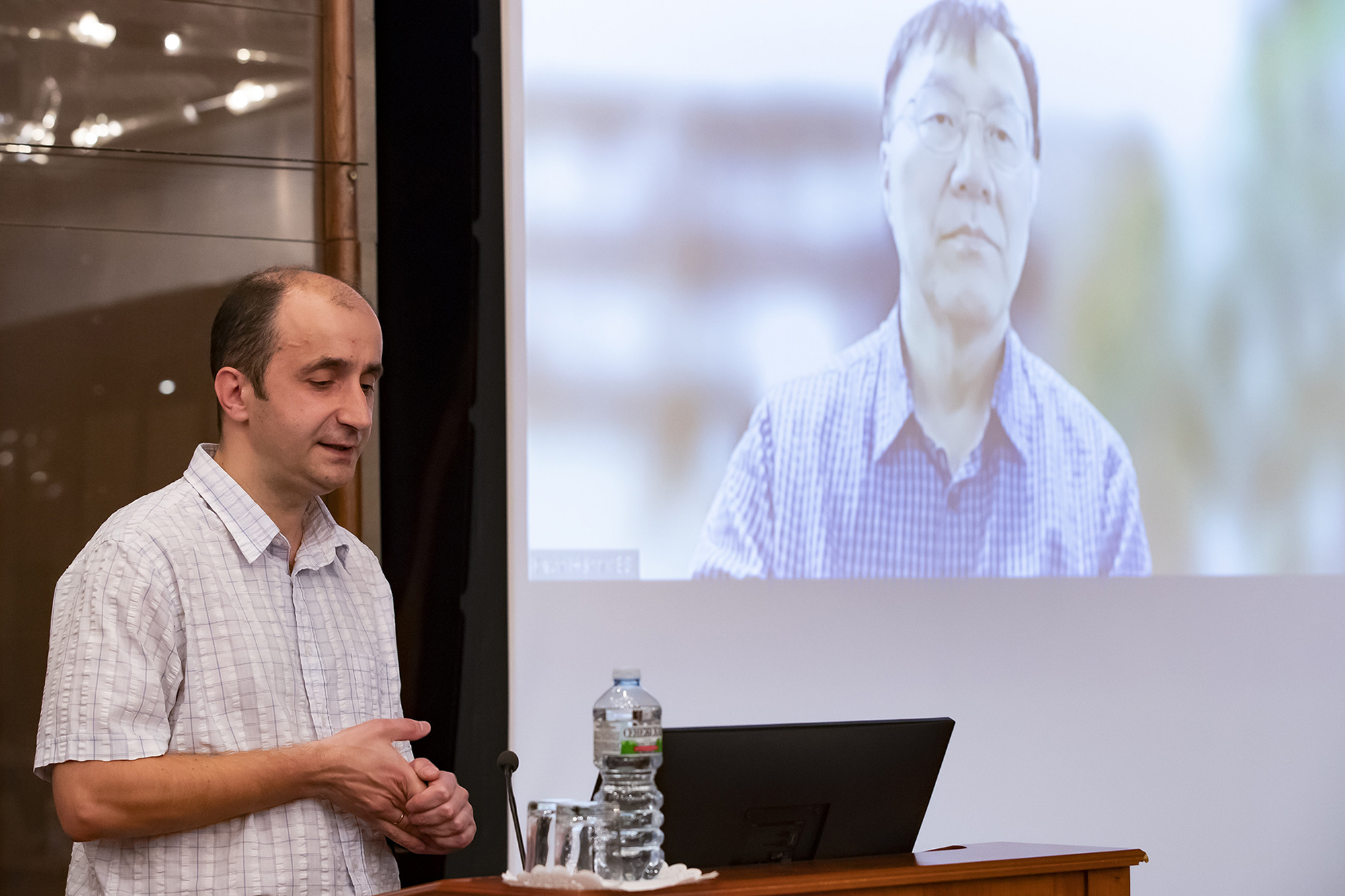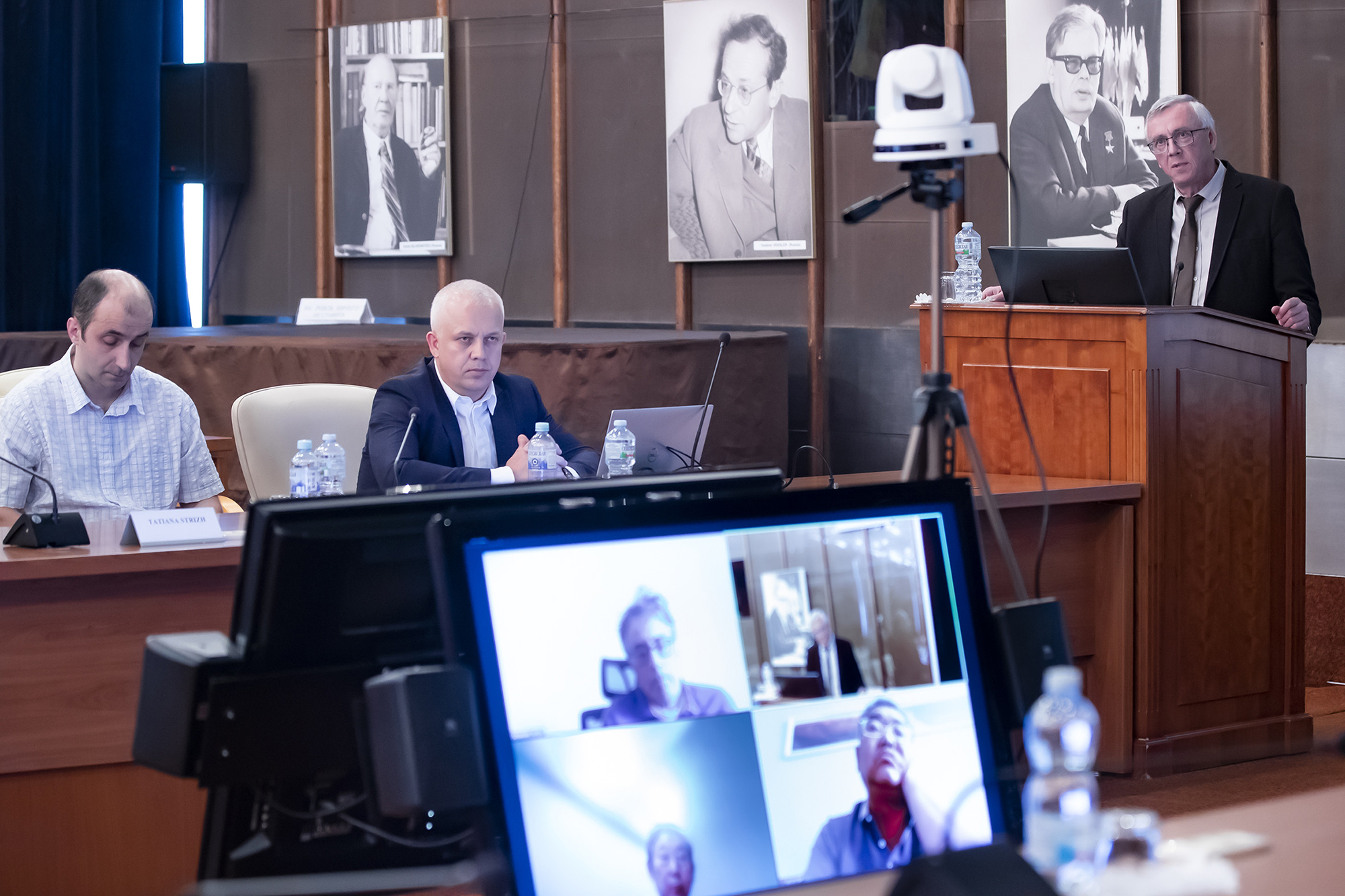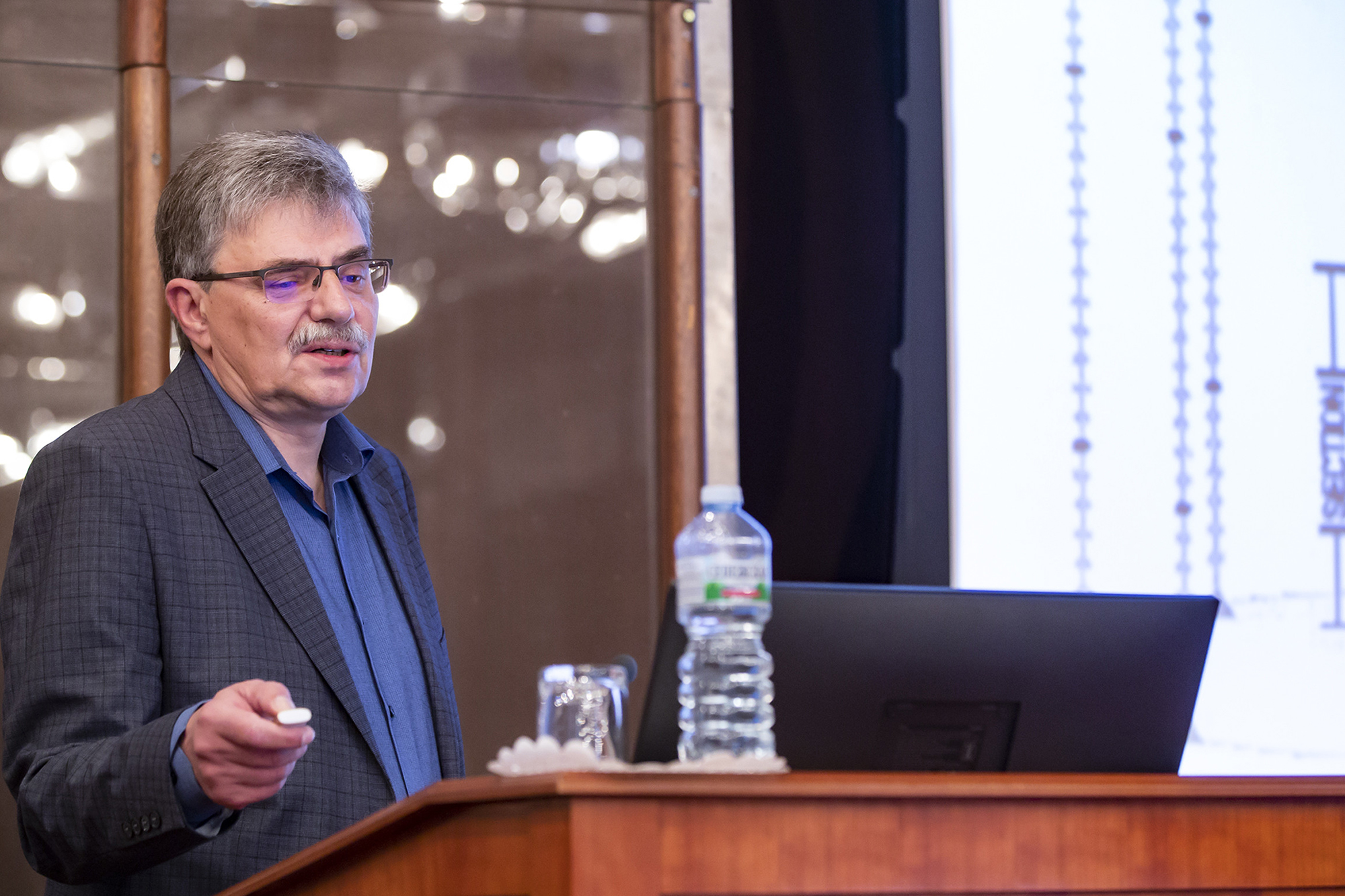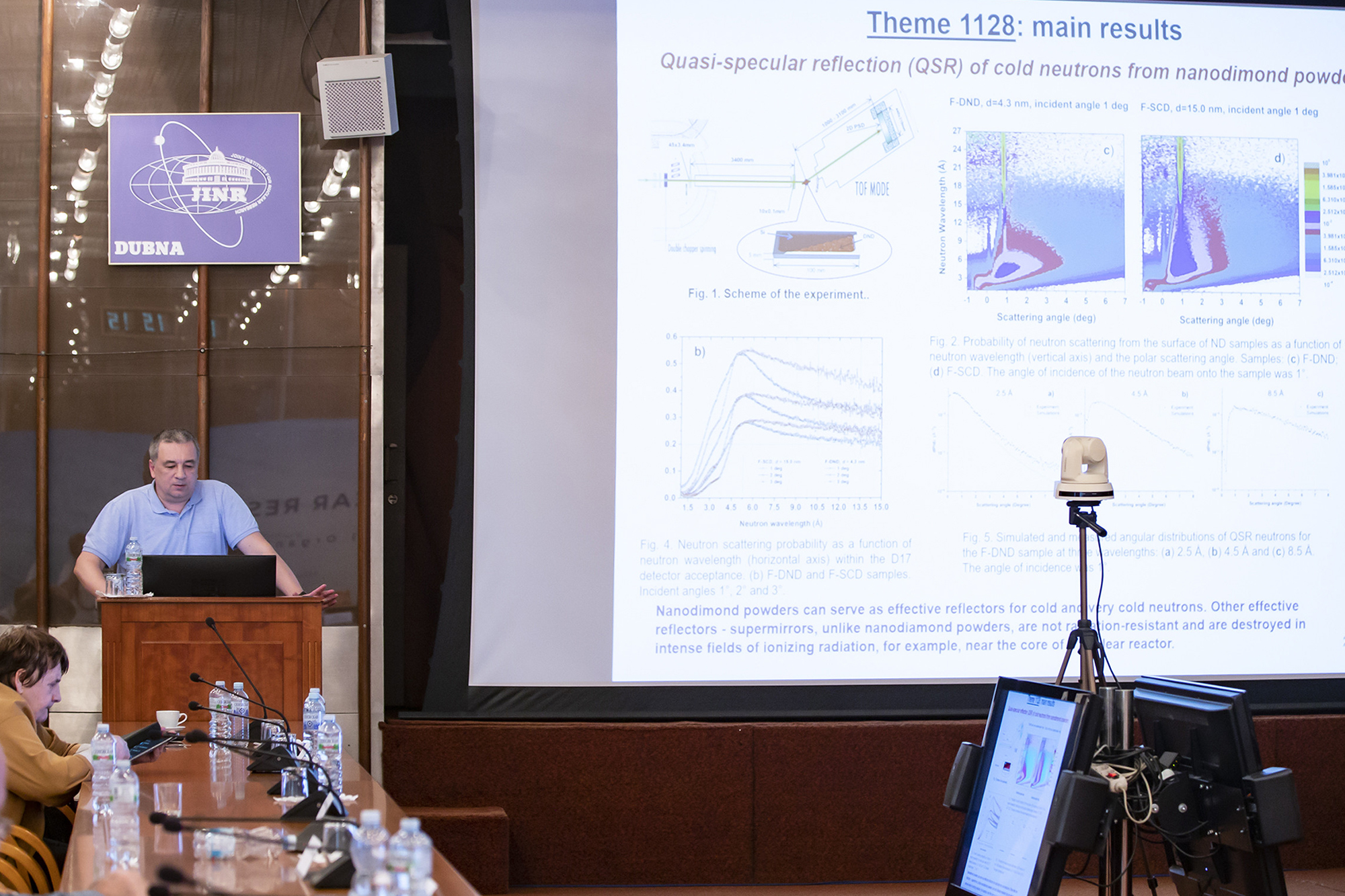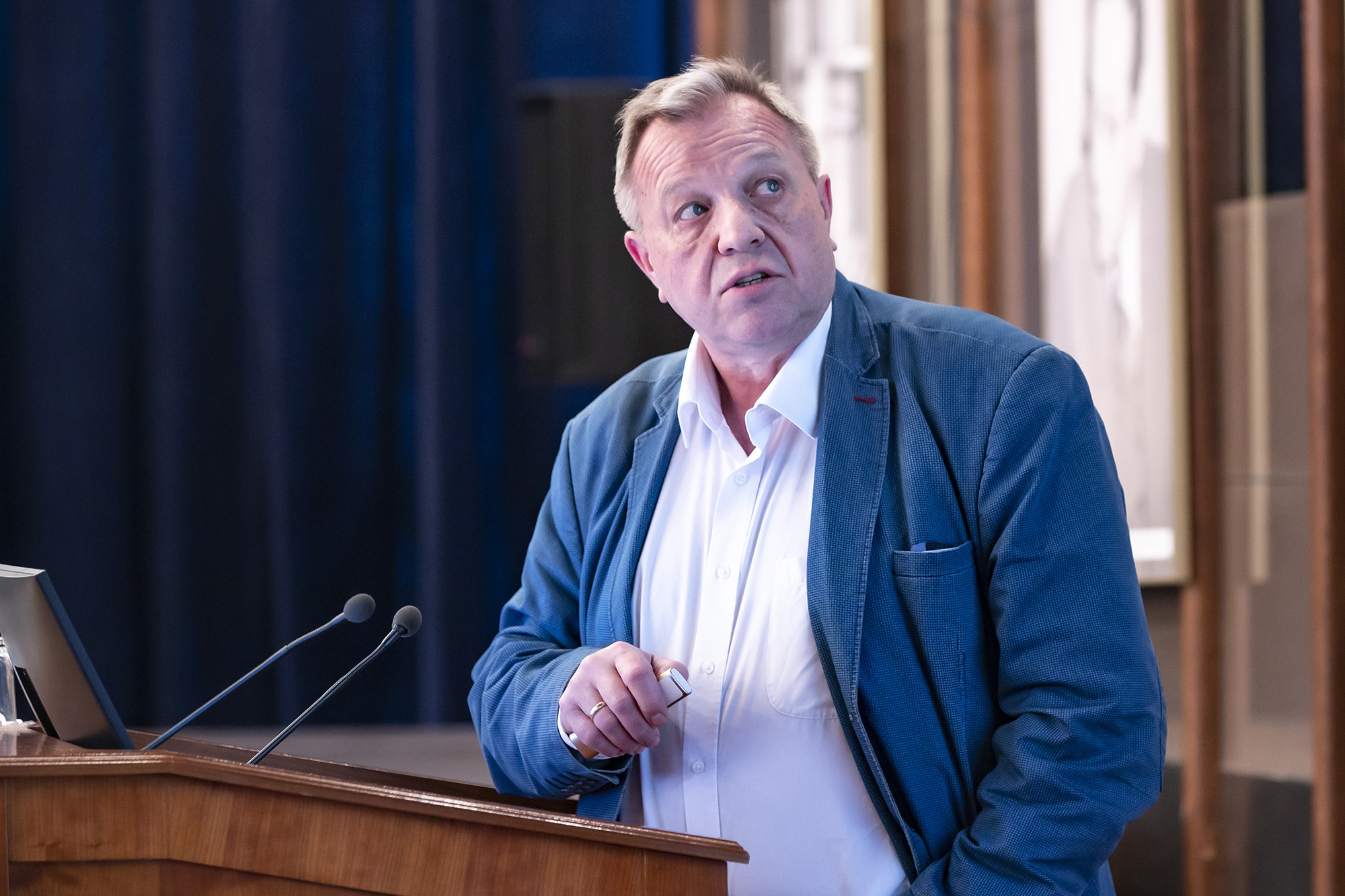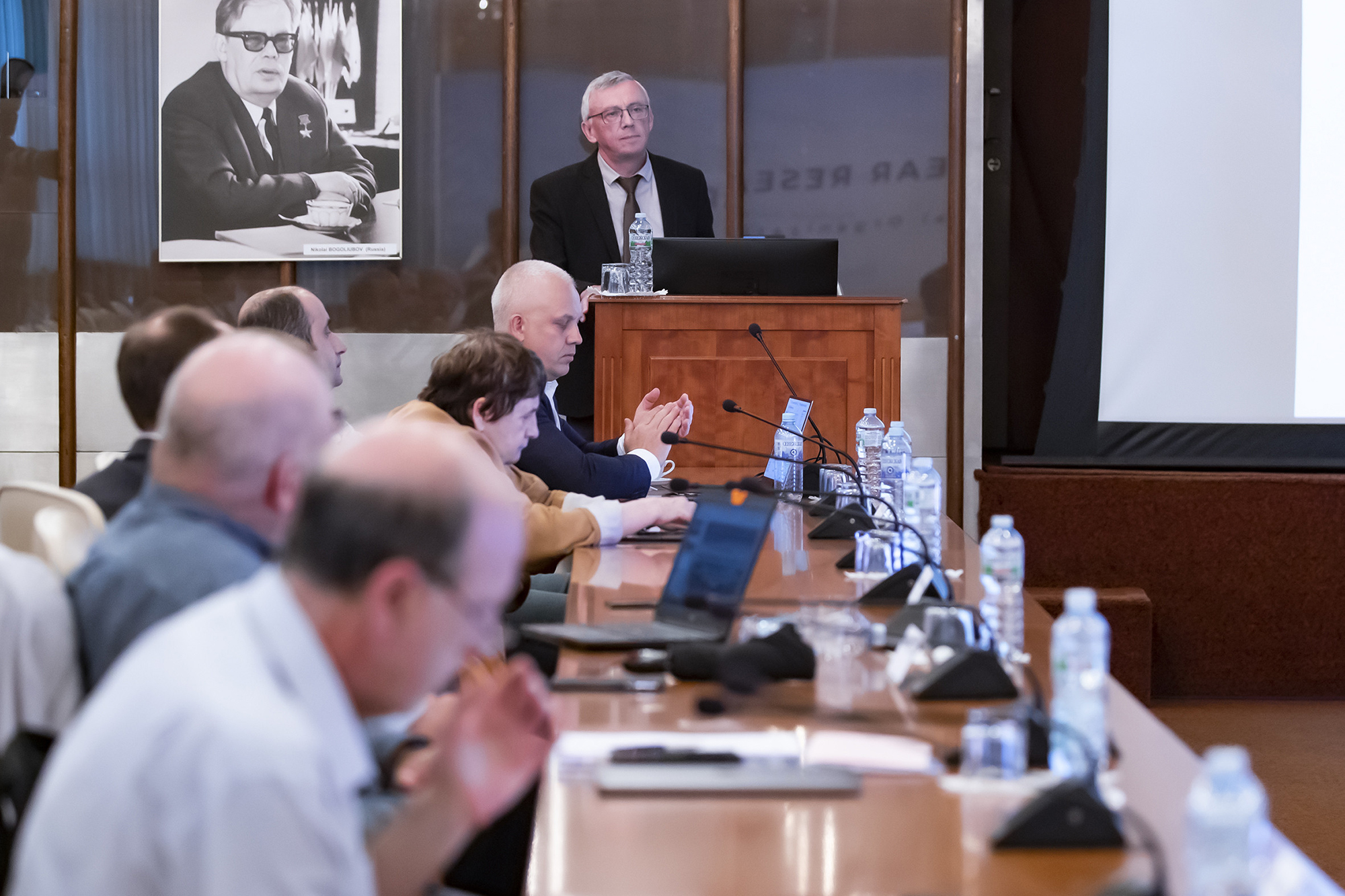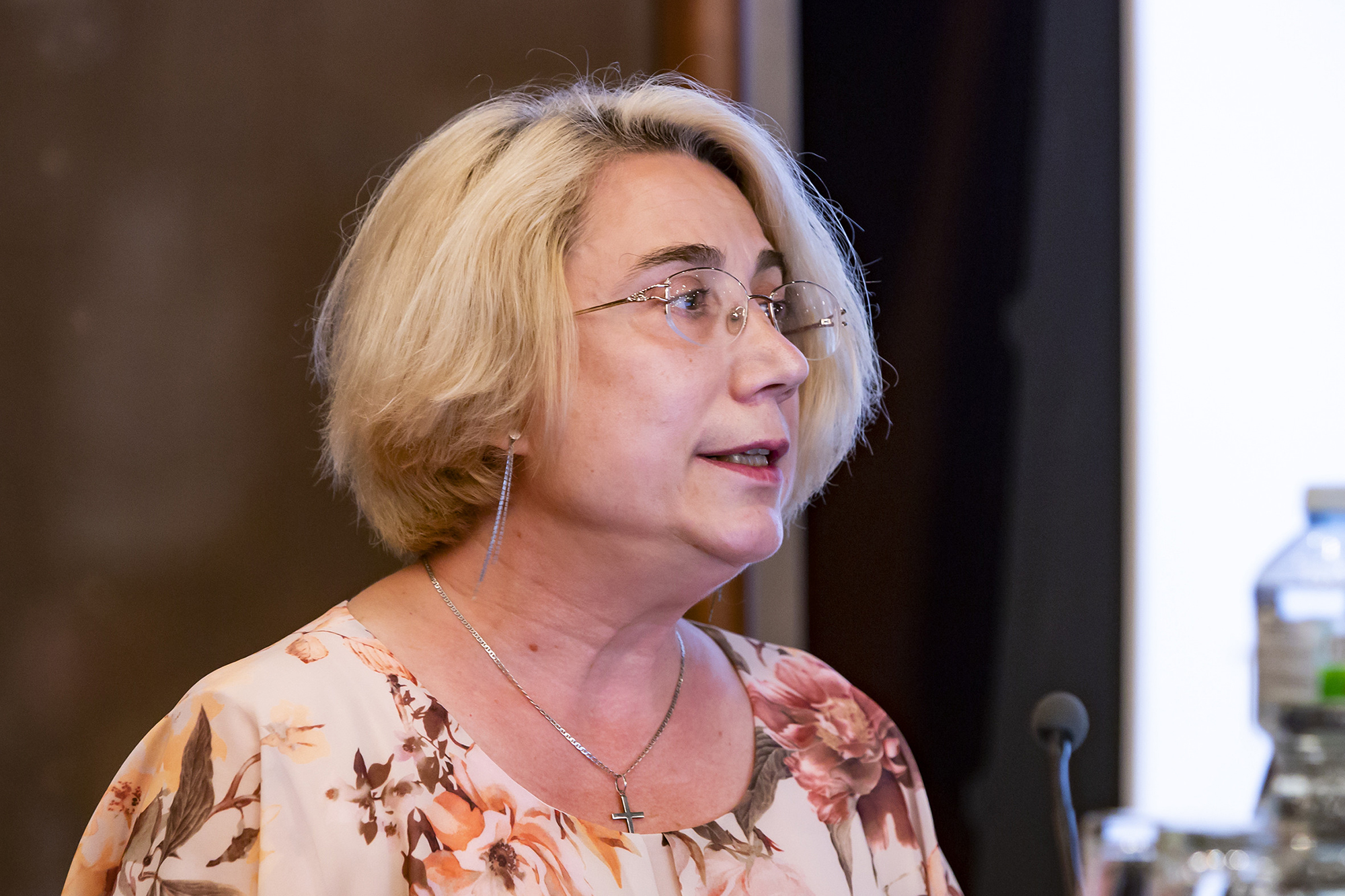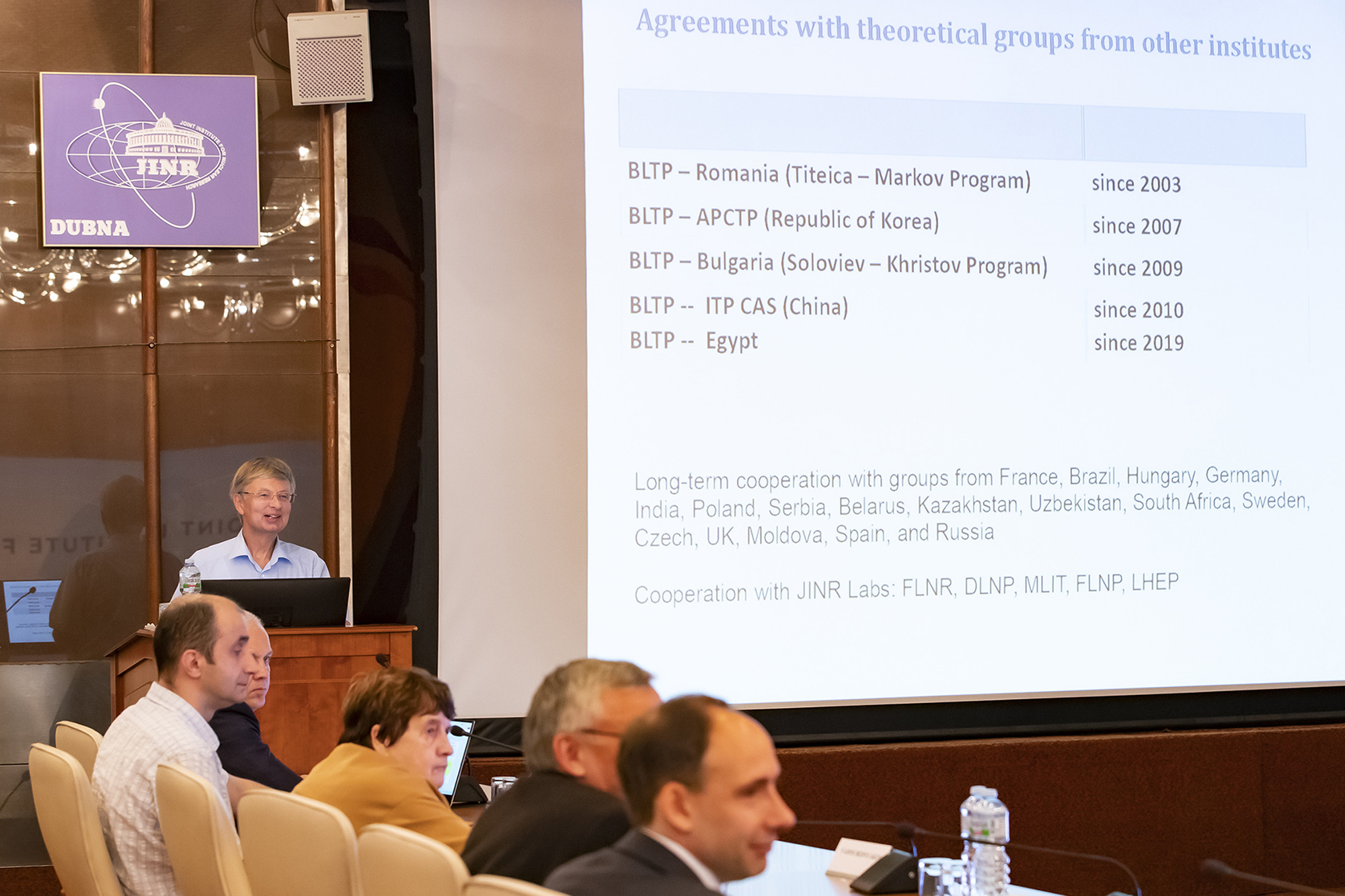PAC NP meeting took place at JINR. Synthesis of new elements at the top of the agenda
News, 30 June 2023
On 29 – 30 June, the 57th meeting of the Programme Advisory Committee for Nuclear Physics took place at JINR. Participants of the event got acquainted with reports on the JINR flagship projects and considered proposals for their extension. Reports on new projects and subprojects were made.
JINR Director Griogory Trubnikov opened the programme of the event with a welcoming speech. “Our expert committees gather at their platform representatives from all around the globe: from Asia, North America, Latin America, Europe, Africa. We are glad to see such a great interest in our scientific programme,” he noted.
PAC NP Chairperson Valery Nesvizhevsky presented information on the implementation of the recommendations of the previous PAC meeting. JINR Vice-Director Sergey Dmitriev continued the meeting with the report on the Resolution of the 133rd session of the Scientific Council (February 2023) and the decisions taken by the Committee of Plenipotentiaries of the Governments of the JINR Member States (March 2023).
Employees of the Laboratory of Theoretical Physics JINR presented four projects dedicated to the study of nuclear structure, nuclear dynamics, the theory of few-nucleon system and relativistic nuclear dynamics. “The PAC members warmly welcomed the projects. We hope that they will be approved, and thus our plans for the next five years will be defined,” Nikolai Antonenko, BLTP JINR Deputy Director, commented on the reports. He made a presentation about the project on the study of low-energy nuclear reactions. “This project includes reactions of astrophysical interest, reactions on the production of superheavy nuclei and studies of the structure of superheavy nuclei. Moreover, in recent years, studies of cluster degrees of free nuclei have been evoking great interest since some phenomena may be explained using them, which could not be explained with other methods before,” Nikolai Antonenko noted.
Director of the Laboratory of Nuclear Reactions JINR Sergey Sidorchuk presented a proposal for prolongation of the theme “Synthesis and properties of superheavy elements, the structure of nuclei at the limits of nucleon stability”. It was noted that the Laboratories face a difficult task of planning for long term. In the near future, FLNR JINR is going to divide its scientific activities into several themes, each of which will include several projects. “The most important project is the synthesis of elements 119 and 120. This task is complicated due to many reasons. Firstly, unusual particles of titanium and chromium are accelerated. To do this, it is necessary to ensure high intensity. Secondly, very exotic, radioactive berkelium targets are used, which are supposed to be produced first. Our colleagues from Dimitrovgrad manufacture them,” Sergey Sidorchuk said. He also noted that FLNR is going to study other ways of reaching the unknown, understudied fields of the isotope map.
Director of the Laboratory of Nuclear Reactions JINR Sergey Sidorchuk presented a proposal for prolongation of the theme “Synthesis and properties of superheavy elements, the structure of nuclei at the limits of nucleon stability”. It was noted that the Laboratories face a difficult task of planning for long term. In the near future, FLNR JINR is going to divide its scientific activities into several themes, each of which will include several projects. “The most important project is the synthesis of elements 119 and 120. This task is complicated due to many reasons. Firstly, unusual particles of titanium and chromium are accelerated. To do this, it is necessary to ensure high intensity. Secondly, very exotic, radioactive berkelium targets are used, which are supposed to be produced first. Our colleagues from Dimitrovgrad manufacture them,” Sergey Sidorchuk said. He also noted that FLNR is going to study other ways of reaching the unknown, understudied fields of the isotope map.
FLNR Scientific Secretary Alexander Karpov presented to the PAC members a detailed overview of the FLNR JINR five-year project on superheavy elements and atoms. “The project will be mostly implemented at the Superheavy Element Factory. It is the largest object of the FLNR JINR infrastructure. The most significant field is, of course, the synthesis of new elements. We hope to begin it during these five years and get a positive result,” he noted.
The SHE Factory was put into operation in 2020. Two gas-filled recoil separators DGFRS-II (Dubna Gas-Filled Recoil Separator) and GRAND have been launched over the past years. The Factory regularly demonstrates high-level scientific results. Among the key results achieved at the complex are the increase in sensitivity (luminosity) of experiments by more than 10 times, production of new isotopes of darmstadtium, flerovium, copernicium and moscovium, as well as observation of the first excited state of copernicium-282, etc. “The results speak for themselves. In terms of the efficiency of the experiments conducted we have surpassed our own capabilities by more than ten times that used to be ensured by U-400. We surpass the world capabilities, too. We have obtained six new isotopes, a multiple superiority in the number of atoms. All this opens up wide prospects for present and future studies. Right from the first experiments we have been getting new results that used to be difficult or even impossible to achieve,” Alexander Karpov highlighted.
According to Alexander Karpov, another important project is the creation of tools for precision measurements of masses of superheavy elements. Prospects provided by the construction of such mass spectrometers were demonstrated within the Grant from the Ministry of Science and Higher Education of Russia in 2020-2022. Among promising tasks of the Laboratory Alexander Karpov also highlighted the study of reactions of multi-nucleon transfers, which is considered as a method of producing neutron-excess isotopes of transuranium elements.
FLNR Deputy Director Grzegorz Kaminski presented a report “Light exotic nuclei at the borders of nuclear stability”. Over the past five years, the project has achieved considerable successes in the study of elastic and inelastic scattering in interactions of helium, lithium, and beryllium isotopes. The ACCULINNA-2 Separator is actively used. The U-400M Accelerator is being upgraded and the first experiments with radioactive beams are being already discussed. New methods are being developed to study the reactions with targets in the form of hydrogen isotopes. A cryogenic tritium target for future experiments has already been installed. The first experiments with it are planned for 2025. The project plans include also the study of the issues of exotic nucleon radioactivity, cross-sections of reactions at deuterium and tritium targets, charge exchange and neutron transfer reactions.
Head of the Nuclear Department of the Laboratory of Neutron Physics JINR Valery Shvetsov presented a proposal to open a new theme “Nuclear physics with neutrons” and a new project on investigations of neutron nuclear interactions and properties of the neutron.
The PAC NP members considered the proposals for opening the new projects. Ayagoz Baimukhanova presented a project dedicated to radiochemistry and spectroscopy for astrophysics and nuclear medicine. Igor Zhitnikov spoke about the studies of short baseline reactor neutrinos. Evgeny Yakushev offered to consider a project on nuclear spectrometry for the search and study of rare phenomena.
Pavel Zarubin (BECQUEREL 2023), Mihaela Paraipan (“E&T&RM” with the new title “ADSR”), Yuri Plis (Study of the nucleon spin structure in strong and electromagnetic interactions), and Igor Belolaptikov (Baikal-GVD) made reports on the projects and presented proposals for their extension.
Head of the Baikal-GVD Project at JINR, an employee of the Laboratory of Nuclear Problems Igor Belolaptikov presented to the participants of the event a report on the project and proposal for its prolongation.
The Baikal-GVD large-scale project is being implemented at the international scale by the collaboration of scientists from nine organizations of four countries of the world. During expedition 2023 to Lake Baikal, the team managed to bring into operation two new clusters of optical modules of the deep-underwater neutrino telescope. Their total number now is 12. Each cluster consists of 288 optical modules that have been developed at JINR. The facility is now capable of catching about 10 galactic and atmospheric neutrinos per year.
Cascade events of high energies were selected in 20218-2021 based on the Baikal-GVD data. The analysis of this data set allowed confirming the result of the IceCube Experiment aimed at the discovery of astrophysical diffuse neutrino flux at the level of higher than three sigma. The parameters of the flux spectrum were also defined that turned out to be close to those obtained on the South Pole.
Further development of the Baikal-GVD Project includes two directions. The first one is the development of the detector’s concept with a volume of up to 10 km3 and the experimental studies on possible fulfillment of it. The other and major direction is the increase in the effective volume of the telescope up to 1km3 with 6,000 optical modules. Now a total of 3,528 optical modules are installed at Baikal-GVD. By 2026-2028, Baikal-GVD will apparently become the largest neutrino telescope in the world if it keeps its current development pace.
A meeting of the PAC members with the JINR Directorate continued the programme. The preparation of the PAC recommendations and proposals for the agenda of the next meeting of the Committee concluded the event.
